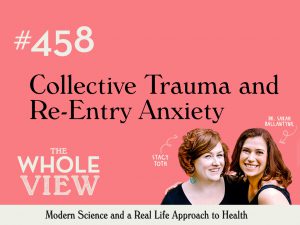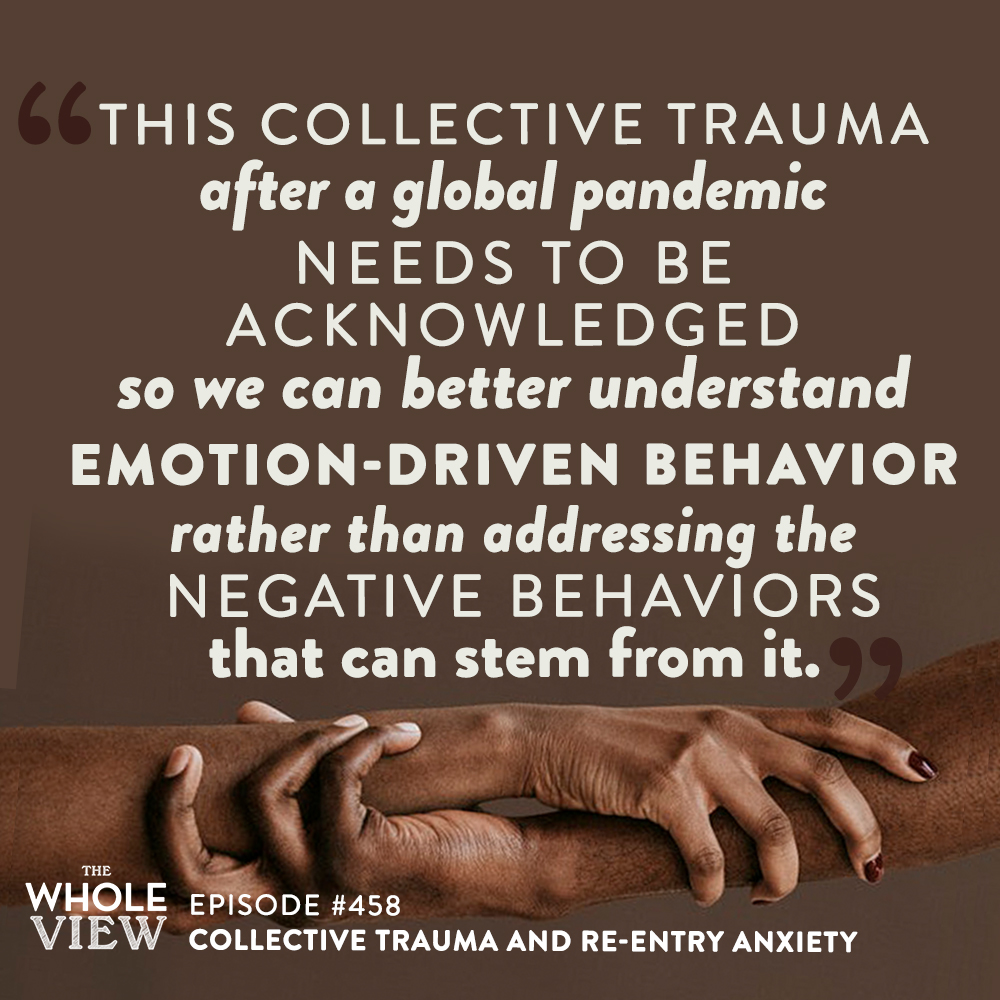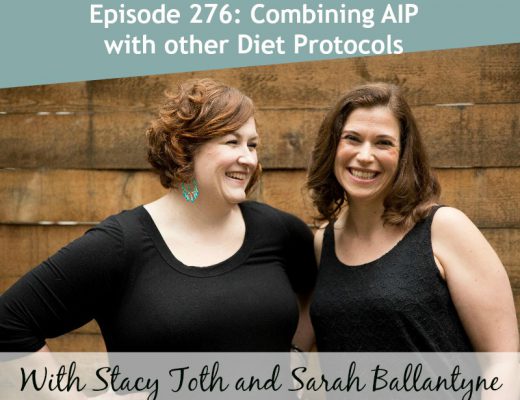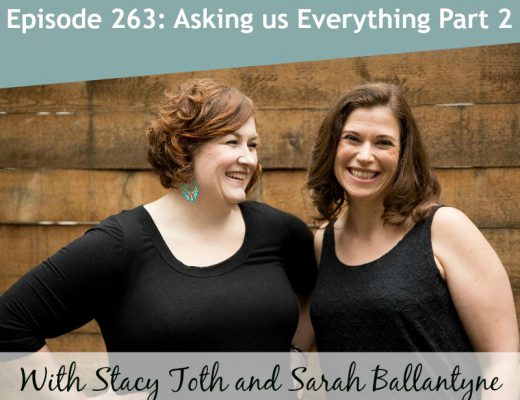
Welcome to episode 458 of The Whole View! This week, Sarah and Stacy look at the collective trauma and how it relates to re-entry anxiety after the Covid-19 pandemic. They look at trauma, PTSD, and mental health as a whole and discuss what you can do to reduce symptoms and re-adjust to a more “normal” daily life.
If you enjoy the show, please review it on iTunes!
The Whole View, Episode 458: Collective Trauma and Re-Entry Anxiety
Welcome back to episode 458! (0:28)
With the decline of covid-19 cases, hospitalizations, and deaths, many places around the United States are starting to open again.
Stacy has realized this last year was trauma, as much as that might sound like an exaggeration.
Trauma is very individual, but we’ve all experienced a collective trauma as a group, and now we’re recovering it as we’re re-entering into the new world.
This resonates especially with Stacy due to her experience with the effects of trauma with her foster kids.
She adds that this is not a dig at or to minimize anyone with different types of trauma or medical conditions regarding mental health. But we need to be willing to acknowledge that this is something people out in the world are going through and ways to support each other.
Sarah is also experiencing quite a lot of re-entry anxiety. She finds the world feels very different, and it’s particularly challenging to reintegrate with people.
Why Are We Experiencing Re-Entry Anxiety?
We’ve made some very different choices during the last 15 months. Even now, we’re making different risk analyses on masks and social distance.
Sarah adds that she’s vaccinated, but her entire family has not been yet, so she’s still choosing to wear a mask. She’s already been mask shamed the same way she was as an early-adopter of masks earlier in the pandemic.
This is a lot of change. Going back to normal after so long of isolation, virtual work, or school, and our old routines is a lot like establishing them.
Sarah manages by giving herself a lot of grace and just introducing one thing at a time. It’s helpful to put those emotions into the mindset of trauma to better understand it.
We want our listeners to know that many people are going through the same thing as you. Society has gone through a collective trauma.
Stacy wants to underline the idea that “group trauma” is very real despite it being something we don’t really think of trauma as a collective and gives the example of a community experiencing a hurricane or other natural disasters.
Increases In Mental Health Issues
Scientists studying the aftermath of the global pandemic look at it from a very umbrella view, looking at increases of anxiety, substance abuse to cope, signs of PTSD, and even suicidal ideation. (10:30)
Last summer, a study reported that the biggest increase in trauma symptoms was in the first few months of the pandemic when things were changing quickly.
Anxiety disorder showed approximately three times more reported in the second quarter of 2019 (25.5% versus 8.1%),
Depressive disorder showed approximately four times what was reported in the second quarter of 2019 (24.3% versus 6.5%) (2).
Suicidal ideation was also elevated; approximately twice as many respondents reported serious consideration of suicide in the previous 30 days than did adults in the United States in 2018, referring to the previous 12 months (10.7% versus 4.3%).
During August 19–31, 2020, through December 9–21, 2020, scientists observed significant increases in the percentages of adults who reported experiencing symptoms of an anxiety disorder (from 31.4% to 36.9%), depressive disorder (from 24.5% to 30.2%), and at least one of these disorders (from 36.4% to 42.4%).
More adults (22.4% to 25%) reported taking prescription medications or receiving mental health counseling during that time. More adults said they needed but did not receive counseling (9.2% to 12.4%).
While the researchers found an increase in symptoms among all demographic groups, the trend was highest among individuals aged 18 to 29 and those with less than high school education.
This additional study showed similar results.
Mental Health Issues Before Covid-19
Stacy shares that she had high-functioning anxiety before Covid-19, which impacts how she dealt with the stress of the pandemic.
Sarah shares that she has 20+ years of experience with panic attacks, which are better or worse during specific times of her life.
So while we might have this collective trauma, our experiences within that trauma might be very different. There’s no one way to experience depression, anxiety, etc.
Stacy and Sarah want to acknowledge this collective trauma and discuss how behavior is driven by emotion, which means we need to support emotion rather than address bad behavior.
Stacy adds that she and Sarah are not medical professionals, and it’s incredibly important to talk to your primary care doctor. Medication, therapy, and/or asking for help is not a failure!
Stacy and Sarah have done many shows on mental health that can act as a foundation for what they’ll be talking about in the episode:
- 319: Abundance Mindset (PTSD, Emotional Freedom Technique, EMDR, and mindfulness)
- 383: Anxiety (amygdala vs. cortex in generalized anxiety disorder, mindfulness, diet and lifestyle for mental health)
- 303: Are Certain Foods Causing My Anxiety?
- 446: Nutrient Deficiencies Caused by Stress (big focus on vitamin C)
- 409: Let’s Talk About Magnesium
- 397: Practical Tips for the Sleep Stress Cycle
- 351: Stress on Health
- 408: Insomnia? (the link between insomnia and mental health)
- 382: Social Media (impact of social media on mental health)
- 251, Transitioning Out of Depression
- 204, Stacy’s Physical and Mental Recovery
How Does Trauma Affect the Brain?
Some common symptoms of PTSD include nightmares, flashbacks, panic attacks, startle response, and preoccupation with the traumatic event. (26:00)
Memories are stored through fragments of visual images, smells, sounds, tastes, or touch within our brains. The brain can easily be triggered by sensory input.
Those with PTSD have more severe reactions to specific inputs that remind them of that trauma. We might not even realize we’re responding in the way that we are, like assuming the worst of others.
In terms of collective trauma from the recent global pandemic, we’ve been conditioned to be wary of things like large crowds or people not wearing masks. Finding yourself in those situations now can trigger re-entry anxiety symptoms similar to how the brain triggers responses for PTSD patients.
Source: https://www.cell.com/trends/neurosciences/fulltext/S0166-2236(11)00103-2
The American Psychiatric Association defines trauma as “an event or events that involve actual or threatened death or serious injury, or a threat to the physical integrity of self or others.”
Such events can include military combat, natural or human-made disasters, torture, and/or violent personal attacks.
Traumatic experiences induce physical and psychological symptoms that affect aspects of life. It can involve significant distress and impairment in social, occupational, and other more.
These experiences can also lead to structural, functional, emotional, and cognitive function and processing.
Behavior vs. Emotion
What all this means is it’s normal to see people behave on a range of spectrums, from scared, passive, and fearful to enraged, aggressive, and impulsive.
Stacy highlights that all these emotions, regardless of where they come from, will change your behavior. This is something she’d noticed significantly from her experiences at home.
It’s not so much about correcting the behavior because the behavior is triggered by an emotion the person is feeling inside.
Unless we understand where that emotion is coming from and how to deal with experiencing it, correcting just the behavior isn’t helping anything.
Understanding that everyone is re-adjusting to “life as normal” puts a lot of perspective on your own re-entry anxiety. That’s it’s not just you, and they’re not treating you a specific way because of something you’ve done.
Stacy and Sarah also talked about this in the context of Generalized Anxiety Disorder in TPV Podcast Episode 383: Anxiety.
You can learn some things you can do to help people when you see this happening. However, simply pointing it out isn’t actually helpful to someone whose amygdala is in protective mode.
Brain Food, Lifestyle Activities, and Re-entry Anxiety
There are many ways that PTSD and other mental health issues also have a profound effect on our physical health. (43:01)
Stacy and Sarah talked about nutrition and lifestyle for mental health in detail in:
- 383: Anxiety
- 303: Are Certain Foods Causing My Anxiety?
- 446: Nutrient Deficiencies Caused by Stress
- 409: Let’s Talk About Magnesium
- 397: Practical Tips for the Sleep Stress Cycle
It’s crucial to take advantage of experts, whether a psychologist, psychiatrist, primary care, specialized physician, or all of the above.
Sarah also acknowledges that certain diets and lifestyles can increase susceptibility to PTSD. However, this does not mean it’s to blame for it. But can looked at as an action step toward helping yourself through your experience.
Studies have shown an association between post-traumatic stress disorder, lack of exercise, poor diet, obesity, and co-occurring smoking.
Meta-analysis revealed that PTSD sufferers were 5% less likely to have healthy diets, 9% less likely to engage in physical activity, 31% more likely to be obese, and 22% more likely to be current smokers.
An additional study looked at post-traumatic stress disorder (PTSD) in mid-age and older adults. They wanted to know if PTSD differs by immigrant status and ethnicity, nutrition, and other determinants of health in the Canadian Longitudinal Study on Aging (CLSA).
Ways to Support Your Mental Health & Re-Entry Anxiety
Science has linked nutrient deficiencies to increased depression/anxiety, and that supplementation helps.
A variety of RCTs show exercise interventions reduce symptoms. However, there’s not enough data to have an optimal “walk 30 minutes per day” or “cardio 4X per week.”
Data also shows that therapy and mindfulness (meditation) reduces symptoms more effectively than stress management education.
Helpful stress management techniques are fresh air, sunlight and nature, walking (low-intensity activity), getting enough sleep on a consistent schedule, and social connection.
Final Thoughts
If your sleep is being impacted by anxiety or depression, it’s more difficult for these health techniques to stick. (1:04:11)
Sarah reminds listeners that sleep regulates our bodies and stress hormones, which can impact our health in various ways.
Social connections are crucial to feeling better, and depression can cause us to isolate and further the problem.
Lifestyle and relationships can be toxic and also impacting your health. Stacy reminds listeners that there’s nothing wrong with setting boundaries with others, self-care, and creating a healthier connection.
Sarah adds that there is nothing wrong with asking for help and that we’re all in this together.
Be sure to check Sarah and Stacy out on Patreon if you’ve not already joined the family. It gets you bonus access to what they really feel about the topics they talk about on The Whole View.
Thank you for listening, and we will see you next week!





